A long straight wire AB carries a current I. A proton P travels with a speed v, parallel to the wire, at a distance d from it in a direction opposite to the current as shown in the figure. What is the force experienced by the proton and what is its direction ?

Magnetic field due to the straight wire AB at a perpendicular distance d from it.
B=μ0I2πd
Therefore force on the proton moving with velocity .v. perpendicular to B, is
f=qvB=μ0Iqv2πd
Direction : towards right
Topper's Solved these Questions
- MOVING CHARGES & MAGNETISMBOOK - OSWAAL PUBLICATIONCHAPTER - MOVING CHARGES & MAGNETISMEXERCISE - TOPIC-1 (Magnetic Field ) (Long Answer Type Question)
1 Videos
- MOVING CHARGES & MAGNETISMBOOK - OSWAAL PUBLICATIONCHAPTER - MOVING CHARGES & MAGNETISMEXERCISE - TOPIC-1 (Magnetic Field ) (Numerical Problem)
1 Videos
- MOVING CHARGES & MAGNETISMBOOK - OSWAAL PUBLICATIONCHAPTER - MOVING CHARGES & MAGNETISMEXERCISE - TOPIC-3 (Current Carrying Conductor & Galvanometer) (Numerical Problem)
1 Videos
- MAGNETISM & MATTER BOOK - OSWAAL PUBLICATIONCHAPTER - MAGNETISM & MATTER EXERCISE - TOPIC-2 Magnetism ( Short Answer Type questions-II)
3 Videos
- NUCLEIBOOK - OSWAAL PUBLICATIONCHAPTER - NUCLEIEXERCISE - TOPIC -2 (Numerical Problems)
3 Videos
Similar Questions
(a) Derie an expression for the force between two long parallel current carryng condcutors.
(b) Use this expression to define SI unit of current.
(c ) A long straight wire AB carries a current I. A proton P travels with a speed v, parallel to the wire, at a distance d from it in a direction opposite to the current as shown in the fig. What is the force experienced by the proton and what is its direction?
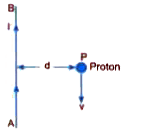
View SolutionA long straight wire AB carries a current I. A proton P travels with a speed v, parallel to the wire, at a distance d from it in a direction opposite to the current as shown in figure. What is the force experienced by the proton and what is its direction?
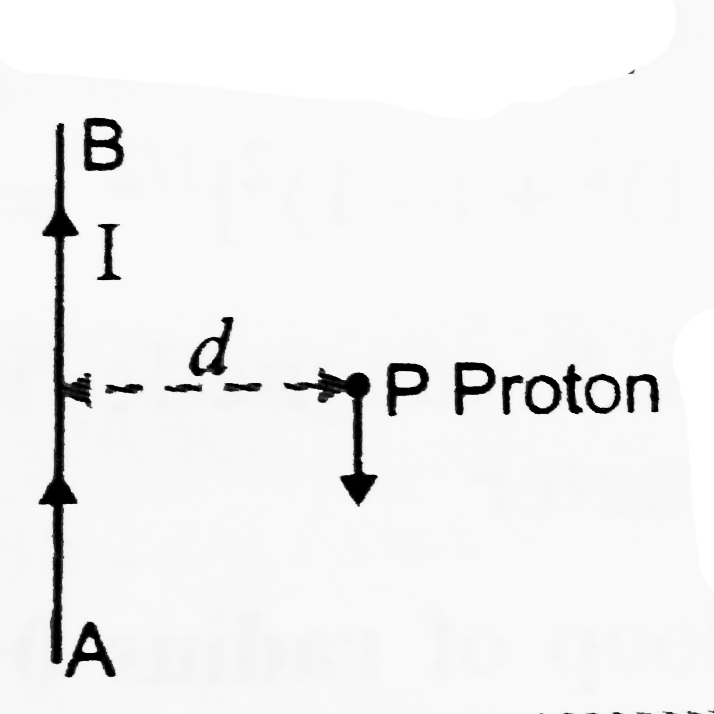
View Solution
Knowledge Check
P, q and R are long straight wires in air, carrying currents as shown in the figure. The force on Ois directed
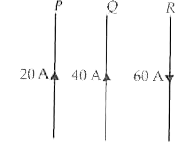 Ato the leftBto the rightCperpendicular to the plane of the diagramDalong the current in
Ato the leftBto the rightCperpendicular to the plane of the diagramDalong the current inAn infinitely long current carrying wire carries current i. A charge of mass m and charge q is projected with speed v parallel to the direction of current at a diatance r from it. Then, the radius of curvature at the point of projection is
A2rmvqμ0iB2πrmvqμ0iCrDcannot be determined
A long straight wire AB carries a current of 4 A. A proton P travels at 4×106ms−1 parallel to the wire 0.2 m from it and in a direction opposite to the current as shown in the figure. Calculate the force which the magnetic field due to the current carrying wire exerts on the proton. Also specify its direction.
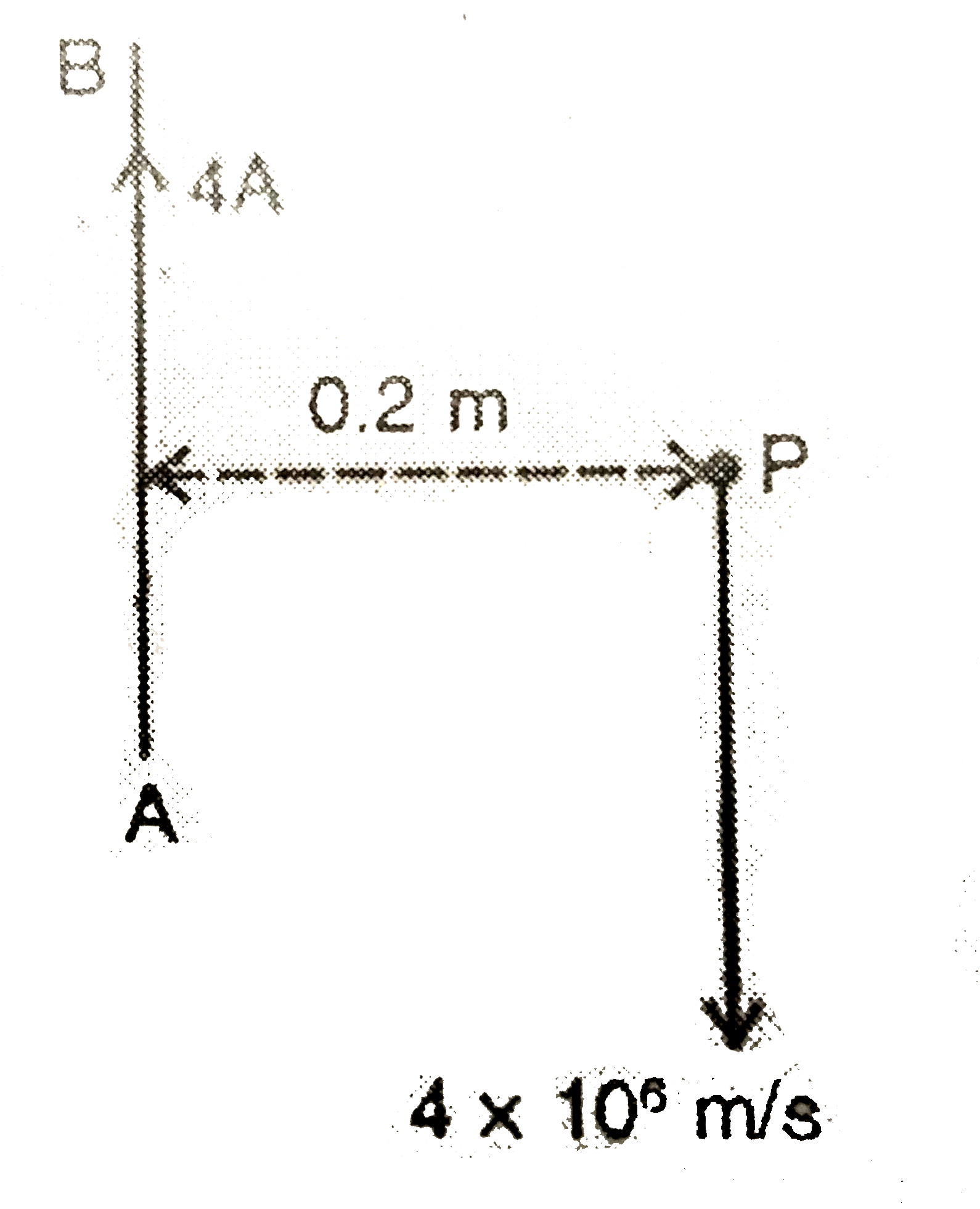
View SolutionA long straight wire AB carries a current of 4 A. A proton P travels at 4×106ms−1 parallel to the wire 0.2 m from it and in a direction opposite to the current as shown in the figure. Calculate the force which the magnetic field due to the current carrying wire exerts on the proton. Also specify its direction.

View SolutionA long straight wire AB carries a current of 4A. A proton P travels at 4×106ms−1 parallel to the wire, 0⋅2m from it and in a direction opposite to the current as shown in figure. Calculate the force which the magnetic field of current exerts on the proton. Also specify the direction of the force.
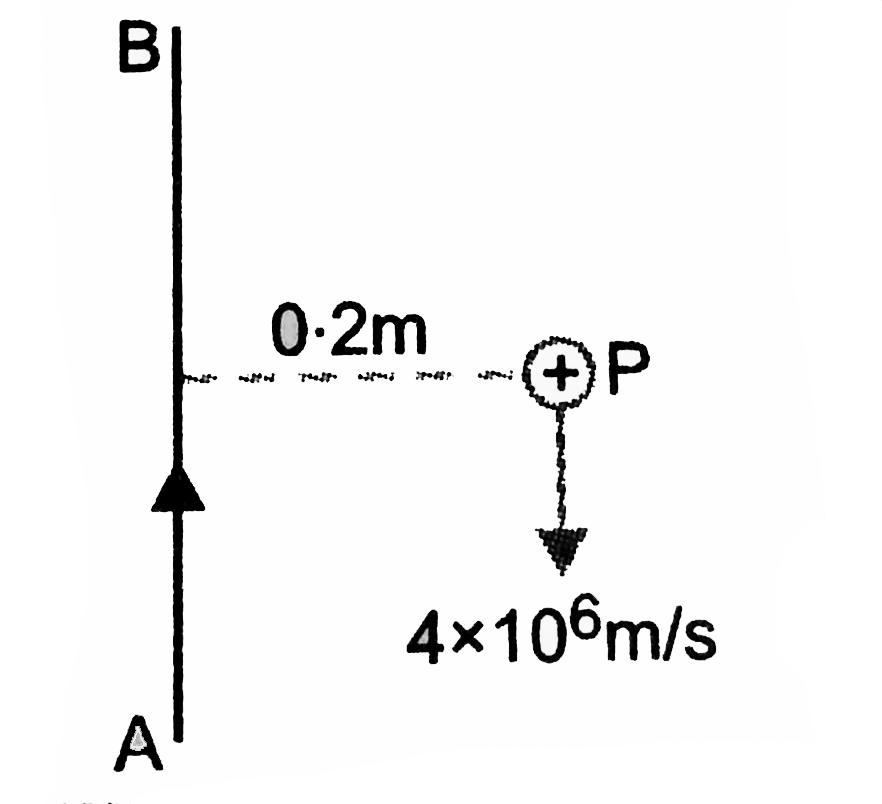
View SolutionA long straight wire AB carries a current of 4 A. A proton P travels at 4×106ms−1 parallel to the wire 0.2 m from it and in a direction opposite to the current as shown in the fig. Calculate the force which the magnetic field due to the current carrying wire exerts on the proton. Also specify its direction.
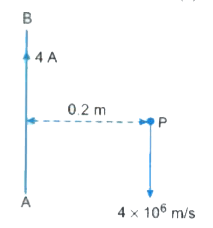
View SolutionTwo long straight wires, each carrying a current I in opposite directions are separated by a distance R. The magnetic induction at a point mid way between the wire is
View SolutionThree long, straight parallel wires carrying current, are arranged as shown in figure. The force experienced by a 25cm length of wire C is
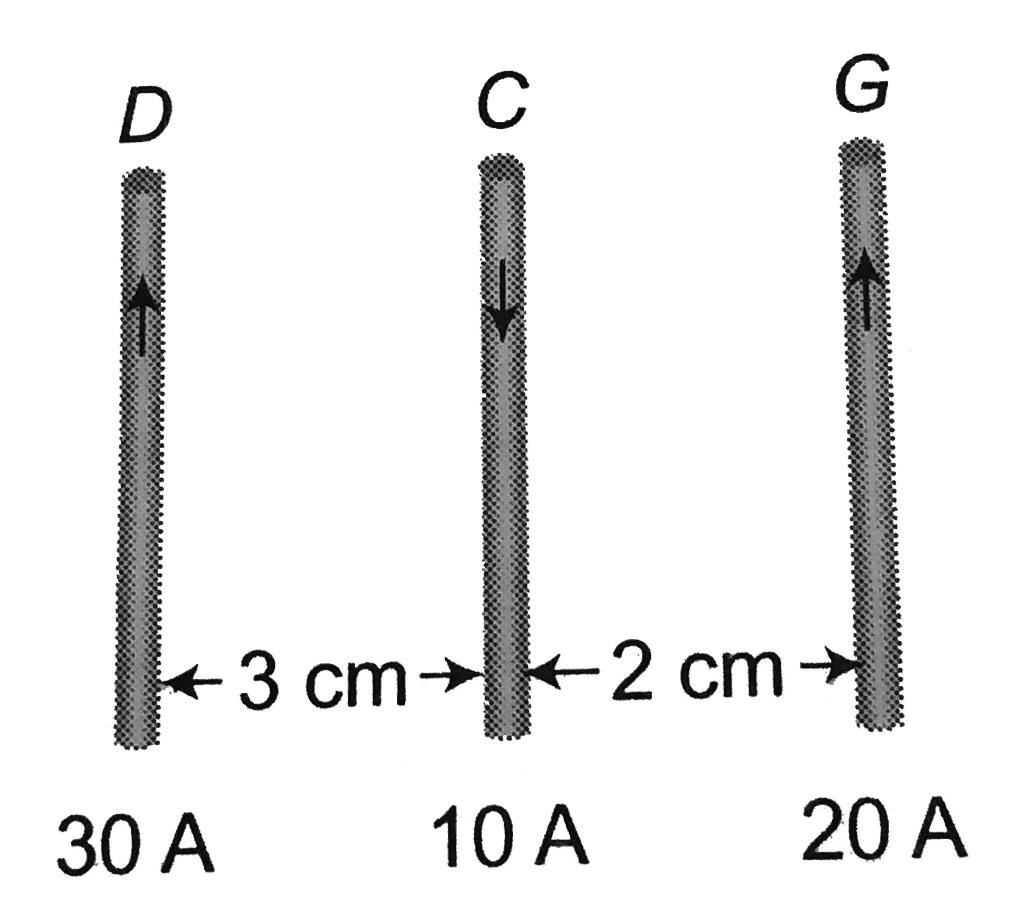
View Solution
